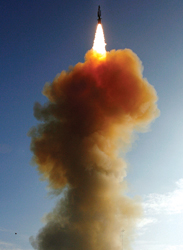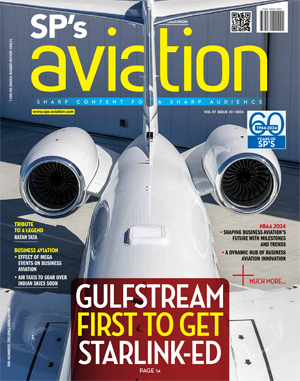INDIAN ARMED FORCES CHIEFS ON OUR RELENTLESS AND FOCUSED PUBLISHING EFFORTS

SP Guide Publications puts forth a well compiled articulation of issues, pursuits and accomplishments of the Indian Army, over the years

"Over the past 60 years, the growth of SP Guide Publications has mirrored the rising stature of Indian Navy. Its well-researched and informative magazines on Defence and Aerospace sector have served to shape an educated opinion of our military personnel, policy makers and the public alike. I wish SP's Publication team continued success, fair winds and following seas in all future endeavour!"

Since, its inception in 1964, SP Guide Publications has consistently demonstrated commitment to high-quality journalism in the aerospace and defence sectors, earning a well-deserved reputation as Asia's largest media house in this domain. I wish SP Guide Publications continued success in its pursuit of excellence.
Many twists to US spy satellite tale

News
On February 21, 2008, a missile launched from a US Navy cruiser soared 240 km above the Pacific and smashed a dying and potentially deadly US spy satellite, the Pentagon said. Several defence officials claimed it had apparently achieved the primary aim of destroying an onboard tank of toxic fuel. Officials had expressed cautious optimism that the missile would hit the satellite, the size of a school bus. But they were less certain of hitting the smaller, more worrisome fuel tank, whose contents posed what Bush administration officials deemed a potential health hazard to humans if it landed intact.
Views
Owned by the National Reconnaissance Office, the US spy satellite was launched in December 2006 from Vandenburg Air Force Base in California for testing newly developed sensors for both optical and radar based high resolution imagery.
Owing to failure of onboard software-based control systems, a hurdle that apparently proved insurmountable, control over the satellite was lost and it was consequently declared defunct and abandoned. However, two months ago, it was observed to be moving progressively closer to the Earth and the estimate was that it would ultimately impact some point on it by the first week of March 2008, posing danger to human habitation. As claimed by Pentagon, the decision to destroy the satellite before it entered the Earth’s atmosphere was triggered by the fact that it was carrying in excess of 500 kg of unspent Hydrazine, a potential threat to humans as the impact point of the satellite could neither be predicted nor controlled. The last part of the claim lacks credibility as the US has the capability to track tiny objects on a re-entry trajectory and predict with reasonable degree of accuracy the likely impact area.
During the Cold War era, both the US and the Soviet Union pursued the development of anti-satellite missiles, conducting innumerable successful tests. The first time that a satellite in orbit was successfully destroyed by an anti satellite weapon launched from a USAF F-15 aircraft was in 1985. Testing was, however, discontinued to avoid pollution of space by debris from fragmented satellites.





